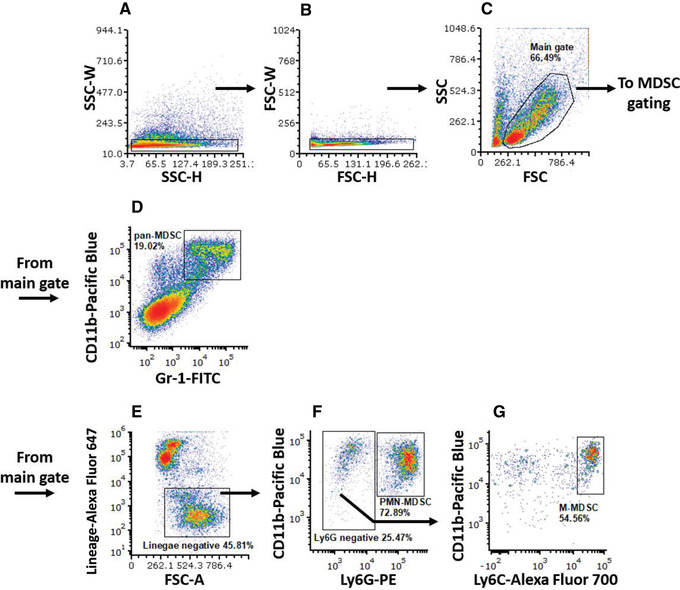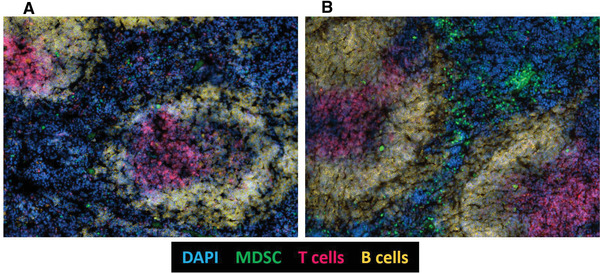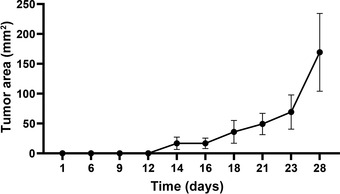Or Reuven, Ivan Mikula, Hadas Ashkenazi-Preiser, Nira Twaik, Kerem Ben-Meir, Yaron Meirow, Leonor Daniel, Guy Kariv, Mahdi Kurd, Michal Baniyash
{"title":"骨髓源性抑制细胞的表型鉴定和分离。","authors":"Or Reuven, Ivan Mikula, Hadas Ashkenazi-Preiser, Nira Twaik, Kerem Ben-Meir, Yaron Meirow, Leonor Daniel, Guy Kariv, Mahdi Kurd, Michal Baniyash","doi":"10.1002/cpz1.561","DOIUrl":null,"url":null,"abstract":"<p><p>Myeloid-derived suppressor cells (MDSCs) are heterogenous populations of immature myeloid cells that can be divided into two main subpopulations, polymorphonuclear (PMN) MDSCs and monocytic (M) MDSCs. These cells accumulate during chronic inflammation and induce immunosuppression evident in an array of pathologies such as cancer, inflammatory bowel disease, and infectious and autoimmune diseases. Herein, we describe methods to isolate and characterize MDSCs from various murine tissue, as well as to phenotype blood-derived MDSCs from patients. The protocols describe methods for isolation of total MDSCs and their subpopulations, for characterization, and for evaluation of their distribution within tissue, as well as for assessing their maturation stage by flow cytometry, immunofluorescence analyses, and Giemsa staining. © 2022 The Authors. Current Protocols published by Wiley Periodicals LLC. Basic Protocol 1: Single-cell suspension generation from different tissue Alternate Protocol 1: Single-cell suspension generation from subcutaneous melanoma tumors Basic Protocol 2: Characterization of MDSC phenotype Basic Protocol 3: Cell separation using magnetic beads: Separating pan-MDSCs or PMN-MDSC and M-MDSC subpopulations Alternate Protocol 2: Staining and preparing MDSCs for sorting Support Protocol: PMN-MDSC and M-MDSC gating strategy in mouse Basic Protocol 4: Immunofluorescence analysis of MDSCs Basic Protocol 5: Handling human blood samples and characterizing human MDSCs Alternate Protocol 3: Flow cytometry staining of thawed human whole blood samples.</p>","PeriodicalId":11174,"journal":{"name":"Current Protocols","volume":" ","pages":"e561"},"PeriodicalIF":0.0000,"publicationDate":"2022-10-01","publicationTypes":"Journal Article","fieldsOfStudy":null,"isOpenAccess":false,"openAccessPdf":"https://www.ncbi.nlm.nih.gov/pmc/articles/PMC11648828/pdf/","citationCount":"0","resultStr":"{\"title\":\"Phenotypic Characterization and Isolation of Myeloid-Derived Suppressor Cells.\",\"authors\":\"Or Reuven, Ivan Mikula, Hadas Ashkenazi-Preiser, Nira Twaik, Kerem Ben-Meir, Yaron Meirow, Leonor Daniel, Guy Kariv, Mahdi Kurd, Michal Baniyash\",\"doi\":\"10.1002/cpz1.561\",\"DOIUrl\":null,\"url\":null,\"abstract\":\"<p><p>Myeloid-derived suppressor cells (MDSCs) are heterogenous populations of immature myeloid cells that can be divided into two main subpopulations, polymorphonuclear (PMN) MDSCs and monocytic (M) MDSCs. These cells accumulate during chronic inflammation and induce immunosuppression evident in an array of pathologies such as cancer, inflammatory bowel disease, and infectious and autoimmune diseases. Herein, we describe methods to isolate and characterize MDSCs from various murine tissue, as well as to phenotype blood-derived MDSCs from patients. The protocols describe methods for isolation of total MDSCs and their subpopulations, for characterization, and for evaluation of their distribution within tissue, as well as for assessing their maturation stage by flow cytometry, immunofluorescence analyses, and Giemsa staining. © 2022 The Authors. Current Protocols published by Wiley Periodicals LLC. Basic Protocol 1: Single-cell suspension generation from different tissue Alternate Protocol 1: Single-cell suspension generation from subcutaneous melanoma tumors Basic Protocol 2: Characterization of MDSC phenotype Basic Protocol 3: Cell separation using magnetic beads: Separating pan-MDSCs or PMN-MDSC and M-MDSC subpopulations Alternate Protocol 2: Staining and preparing MDSCs for sorting Support Protocol: PMN-MDSC and M-MDSC gating strategy in mouse Basic Protocol 4: Immunofluorescence analysis of MDSCs Basic Protocol 5: Handling human blood samples and characterizing human MDSCs Alternate Protocol 3: Flow cytometry staining of thawed human whole blood samples.</p>\",\"PeriodicalId\":11174,\"journal\":{\"name\":\"Current Protocols\",\"volume\":\" \",\"pages\":\"e561\"},\"PeriodicalIF\":0.0000,\"publicationDate\":\"2022-10-01\",\"publicationTypes\":\"Journal Article\",\"fieldsOfStudy\":null,\"isOpenAccess\":false,\"openAccessPdf\":\"https://www.ncbi.nlm.nih.gov/pmc/articles/PMC11648828/pdf/\",\"citationCount\":\"0\",\"resultStr\":null,\"platform\":\"Semanticscholar\",\"paperid\":null,\"PeriodicalName\":\"Current Protocols\",\"FirstCategoryId\":\"1085\",\"ListUrlMain\":\"https://doi.org/10.1002/cpz1.561\",\"RegionNum\":0,\"RegionCategory\":null,\"ArticlePicture\":[],\"TitleCN\":null,\"AbstractTextCN\":null,\"PMCID\":null,\"EPubDate\":\"\",\"PubModel\":\"\",\"JCR\":\"\",\"JCRName\":\"\",\"Score\":null,\"Total\":0}","platform":"Semanticscholar","paperid":null,"PeriodicalName":"Current Protocols","FirstCategoryId":"1085","ListUrlMain":"https://doi.org/10.1002/cpz1.561","RegionNum":0,"RegionCategory":null,"ArticlePicture":[],"TitleCN":null,"AbstractTextCN":null,"PMCID":null,"EPubDate":"","PubModel":"","JCR":"","JCRName":"","Score":null,"Total":0}
引用次数: 0




 求助内容:
求助内容: 应助结果提醒方式:
应助结果提醒方式:


